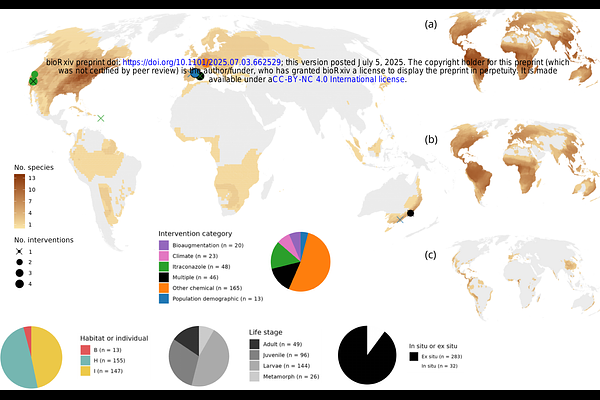Global assessment of interventions for mitigation of amphibian fungal disease is dominated by geoeconomic trends and antifungal success

Global assessment of interventions for mitigation of amphibian fungal disease is dominated by geoeconomic trends and antifungal success
Goodyear, L. E. B.; Concha-Toro, V.; Pincheira-Donoso, D.
AbstractGlobalisation networks--a rapidly expanding factor behind Anthropocene environmental erosion--facilitate the accelerating spread of invasive species and diseases globally. Among wildlife infectious diseases, chytridiomycosis (caused by the fungal pathogen Batrachochytrium dendrobatidis, or Bd) has been widely implicated with the alarming global decline of amphibians--nature\'s most endangered organisms. Over the last few decades, a range of interventions have been tested to mitigate the annihilating impacts of Bd on amphibian communities, with high disparity in success. However, no integrative quantitative assessment of the effectiveness of interventions exists, thus hindering a broader understanding about where actions and further research should be directed. Using a novel, globally comprehensive database of interventions, we show that antifungal treatments of itraconazole applied to individual tadpoles seem offer the best results compared to other interventions. Further, trials performed ex situ, predominantly applied in the Global North, may severely bias the ability to assess the effectiveness of treatments applied in more biodiverse areas, across species that have been most severely affected. Our study is a call to continue experimentation on promising novel methods and to expand the geographic and taxonomic deployment of interventions to approach a robust evidence-based understanding of the effectiveness of treatments.